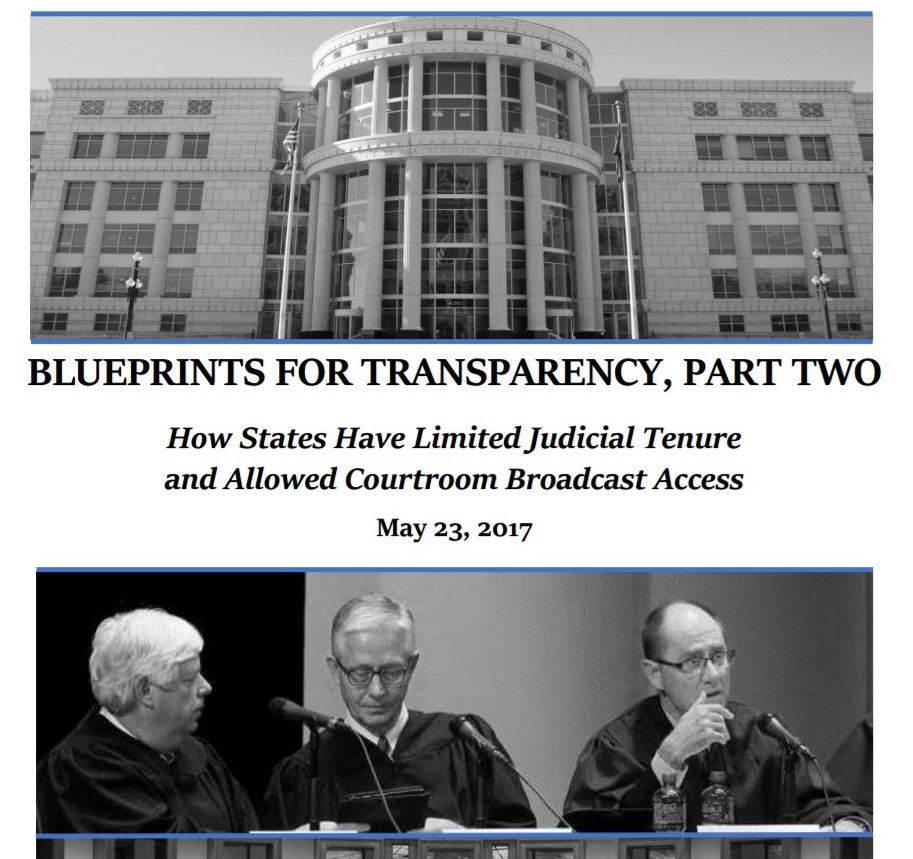How Top State Courts Became More Open than SCOTUS
As a follow-up to its international courts report, FTC looks at broadcast and judicial retirement provisions in states with Judiciary Committee senators
 The mental decline of sitting justices, the unpopularity of high-profile decisions and the influence of nonpartisan legal groups are the leading factors that have prompted state governments to enact retirement age provisions for their top judges, according to a Fix the Court report released today.
The mental decline of sitting justices, the unpopularity of high-profile decisions and the influence of nonpartisan legal groups are the leading factors that have prompted state governments to enact retirement age provisions for their top judges, according to a Fix the Court report released today.
The organization also deduced why the high courts of Iowa, California, Minnesota, Texas and Utah are more open to broadcast that their One First Street counterparts: in some cases, video-recording was seen as the best method for capturing an accurate record of a court proceedings; in others, a series of gripping cases captured the state’s and nation’s attention and compelled video. (Read the report here.)
“State courts’ experience with contemporary broadcast and retirement policies has shown that the U.S. Supreme Court has nothing to fear in modernizing,” Fix the Court executive director Gabe Roth said.
The courts of last resort in Minnesota (70 years), Iowa (72), Texas (75) and Utah (75) have mandatory retirement ages for their justices. California does not, but its justices must sit for retention elections every 12 years. Additionally, all five high courts have more permissive broadcast policies, with some live-streaming their hearings online (Iowa, California, Texas and Utah) and others filming their hearings for broadcast within 24 hours (Minnesota).
OUR FINDINGS
Four factors that have aided in the passage of retirement age provisions:
1. Just as we found in our foreign courts report, the age of a democracy – or in this case, a state – was a primary factor in limiting judicial tenure. Alaska’s decision on its way to statehood to adopt what’s called the “Missouri Plan” – an ABA-endorsed regimen that combined nonpartisan nominating commissions, executive appointment and voter retention of judges – compelled other states to consider the reform.
2. Counterintuitively, the bundling of court reforms into a reform package may make them more likely to pass than if those reforms were proposed on their own. For example, the rash of mandatory retirement age provisions proposed in the 1960s were often a part of a larger reform package that included pro-accountability measures, like stricter ethics rules, which were sweetened from the judges’ perspective by the inclusion of retirement pay and other benefits (TEXAS, UTAH). Similarly, webcasting of oral arguments was more likely to become courtroom policy if that reform was viewed as one part of larger court modernization efforts (TEXAS).
3. Though mandatory retirement age provisions do not have universal support, as judges are challenging their legality to this day (MINNESOTA), states with later retirement ages – i.e., age 75 (TEXAS, UTAH) – are less likely to have ongoing fights over retirement policy. And rumors of senility will accelerate efforts to impose a judicial retirement age (MINNESOTA).
4. Similarly, it is sound policy – based both on need and the fact that many older adults enjoy working in their later years – to offer retired judges the opportunity to stay on as senior judges after they reach their retirement age (IOWA).
Four factors that have aided in the passage of pro-broadcast provisions:
1. Courts that are led by younger judges and justices are more likely to support the use of live video in their courtrooms (TEXAS), as are those who implemented early pilot programs, i.e., in the 1970s and 1980s (IOWA).
2. Strong advocacy from local media – both from journalists themselves and from media professors and membership associations – has helped convince state judiciaries to allow broadcast access (CALIFORNIA, UTAH).
3. Major cases concerning novel areas of law or important national controversies are likely to spark judges’ interest in allowing expanded broadcast access (IOWA, CALIFORNIA). Five and 10 years ago it was same-sex marriage. Nowadays it may be executive orders banning immigrants from six predominantly Muslim nations.
4. Not having an opt-out provision should a cameras pilot program be implemented. Judges in MINNESOTA who participated in a cameras-in-courts pilot had the option to turn the cameras off – much like the judges in the 2011-2015 federal pilot – which meant fewer proceedings were recorded and little data was gathered.
Instead of looking at all 50 state courts of last resort, Fix the Court examined five: the two states that have both of their senators on the Judiciary Committee (MINNESOTA, TEXAS and UTAH) and the two that are home to that committee’s majority leader and ranking member (IOWA and CALIFORNIA, respectively).
The Judiciary Committee is the committee of jurisdiction for all federal court-related matters, so any effort to change the broadcast or retirement rules would most likely start there.
Fix the Court will present the report to Sens. Grassley, Feinstein, Klobuchar, Franken, Cornyn, Cruz, Hatch and Lee and their staffs in the coming week.